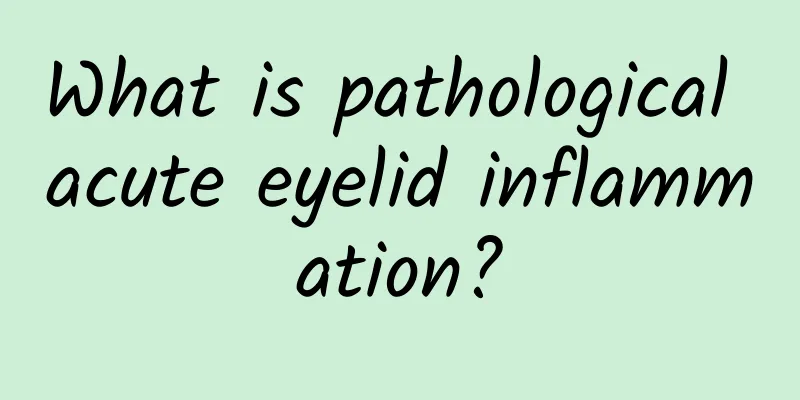Diagnosis of drug-induced liver injury

|
Drug-induced fatty liver damage is mainly caused by the mechanism of drugs causing fat damage. Because the drugs and their metabolites will have direct toxic effects on the liver, in order to better prevent it, the use of drugs should also be taken seriously. 1. To understand the mechanism of drug-induced liver damage , we first need to understand the metabolic characteristics of drugs in the liver. Drugs that are normally absorbed from the digestive tract enter the liver via the portal vein. The liver is an important organ for drug accumulation, transformation, and metabolism. The metabolic process of most drugs in the liver includes two phases: transformation and binding, namely phase I metabolism and phase II metabolism. Phase I metabolic reactions mainly include oxidation, reduction and hydrolysis reactions. After this phase reaction, the polarity of the drug increases, that is, the water solubility increases, and it is easy to be excreted from the body. The enzyme involved in Phase I metabolism is mainly cytochrome P450 (CYP); Phase II metabolic reactions are mainly conjugation reactions. After this phase reaction, the drug can combine with glucuronic acid, methyl, sulfhydryl, glycine and other groups to form a more polar substance, which is excreted from the body through bile or urine. Some drugs require only phase I metabolism, while others require both phase I and phase II metabolism. The genes of phase I and phase II metabolic enzymes in the liver are polymorphic in the population, so different individuals have great differences in tolerance and sensitivity to drugs. In some individuals, some drugs will produce toxic or carcinogenic substances during the metabolic process, further causing liver damage, or drugs that are originally non-antigenic will form antigenic metabolites after conversion in the liver, causing immune liver damage. 2. Direct toxic effects of drugs and their intermediate metabolites on the liver: Active metabolites such as electrophilic radicals and free radicals produced by drug metabolism by CYP are usually detoxified by combining with glutathione (GSH) and do not cause liver damage. However, when the drug is taken in excess or there is a genetic abnormality in drug metabolism, active metabolites such as electrophilic radicals and free radicals are generated in large quantities, depleting the GSH in the liver and causing lipid peroxidation by binding to the unsaturated fatty acids of the cell membrane phospholipids. It causes membrane damage and destruction of the self-stability of calcium-ATP, leading to mitochondrial damage and liver cell necrosis; the electrophilic groups can also covalently bind to nucleophilic groups such as the thiol group of cysteine residues of liver cell proteins and the amino group of lysine residues, causing actin coagulation and cytoskeleton destruction, causing the cell membrane to lose its chemical and physiological properties and produce cell necrosis. Drugs and their metabolites may also interfere with certain links of cell metabolism, affecting protein synthesis or the normal secretion of bile acids, causing liver cell damage and/or bile stasis. This type of drug-induced liver injury is dose-dependent, predictable, and can be replicated in animals. 3. The body's idiosyncratic reaction to drugs , including allergic (immune idiosyncratic) and metabolic (metabolic idiosyncratic). The former is mainly due to the fact that the drug or its active metabolites act as haptens, combining with endogenous proteins to form autoantibodies with immunogens, which can induce liver cell death or destruction; this immunogen can also be recognized by CD4+ cells, inducing the production of some cytokines, further activating CD8+T cells, and causing Fas- or perforin-mediated liver cell apoptosis and cell damage. The latter is mainly related to genetic polymorphism of individual drug-metabolizing enzymes, which results in reduced drug metabolism ability, accumulation of drug prototype and/or intermediate metabolites, and toxicity to liver cells. DILI induced by the body's idiosyncratic response to drugs has no correlation with medication dosage and course of treatment. This type of liver damage only occurs in a few individuals and is safe for most people. It is unpredictable and often cannot be replicated in experimental animal models. |
<<: Will iodine deficiency cause goiter?
>>: Can scar cream be used to remove scars after mole removal?
Recommend
How many calories does taro have? Revealing the therapeutic effects of taro
Taro is one of the common foods. There are not ma...
What to do with burn scars?
The thing people hate most in their lives is havi...
Can hepatitis carriers be cured?
Under current medical conditions, hepatitis canno...
What is the disease of white foam in the stomach?
Gastric disease is the most common disease in lif...
How to prevent brain tumors, six ways to stay away from brain tumors
Brain tumor is a disease that is difficult to cur...
What is gout? What are the causes and types of gout?
Health is something that each of us is concerned ...
Treatment of eczema
Eczema is a relatively common skin disease. Many ...
What to do with swollen and painful hemorrhoids? Folk remedies for treating swollen and painful hemorrhoids
Hemorrhoids are a very common disease. Hemorrhoid...
Dry and bitter mouth when I wake up in the morning
Good sleep quality is the guarantee for people to...
Can compound ginseng bark tincture cure athlete's foot?
Compound Tujinpi tincture is a relatively common ...
Can't I take a shower after drinking?
Can’t you take a shower after drinking alcohol? M...
Don't eat cold food in dog days
In the hot summer, ice cream, air conditioning an...
Can drinking more water help gallstones be expelled?
Gallstones are a relatively common stone disease....
Symptoms of acidosis
When the human body is abnormal, there will be ob...
Indications and contraindications for paracentesis
Many medical treatments can only treat correspond...









